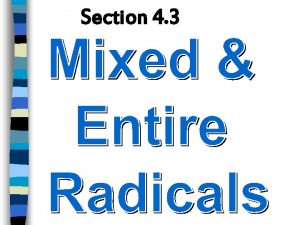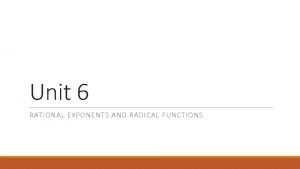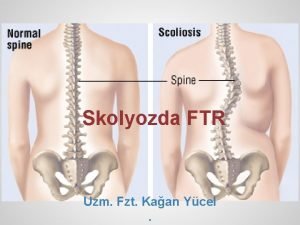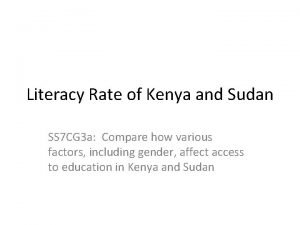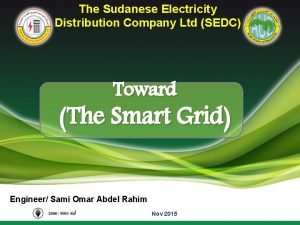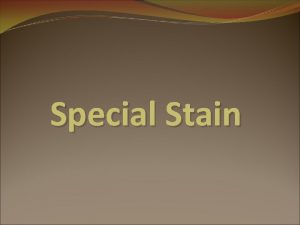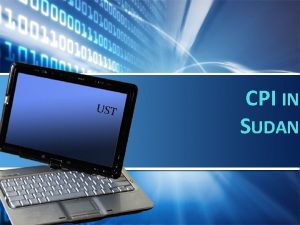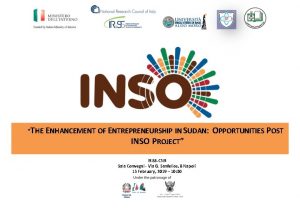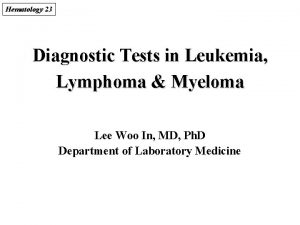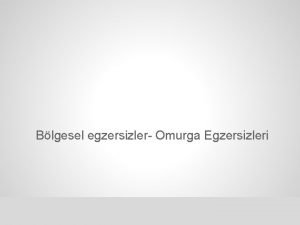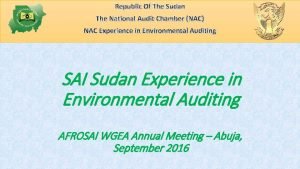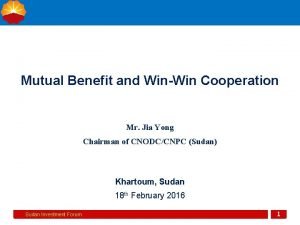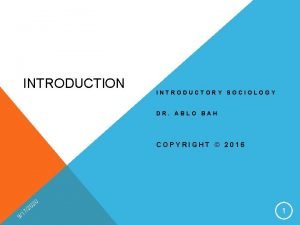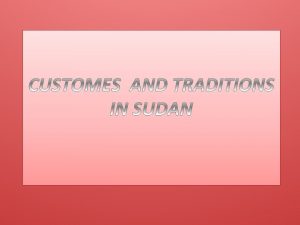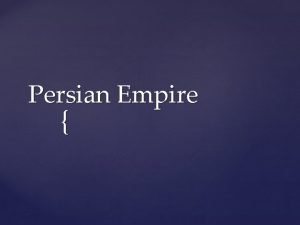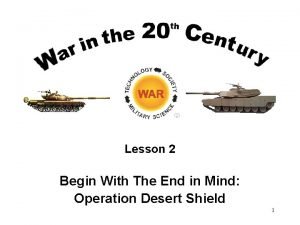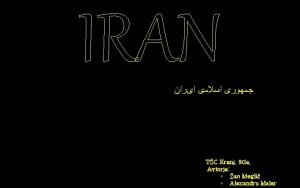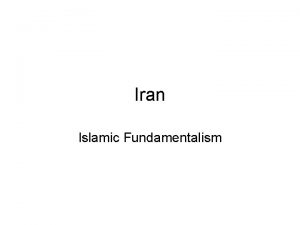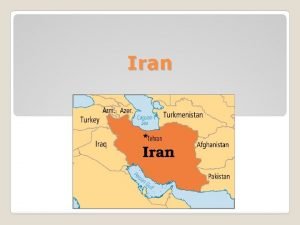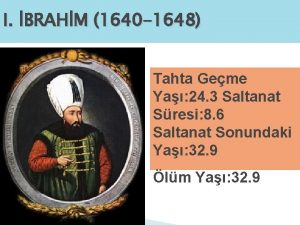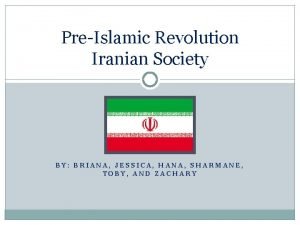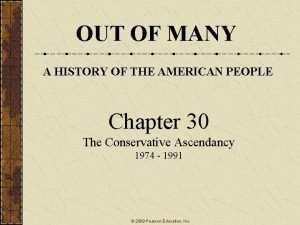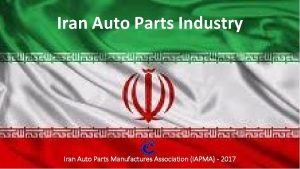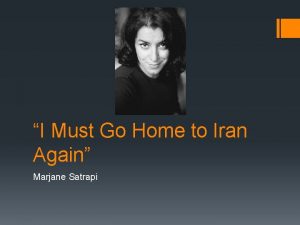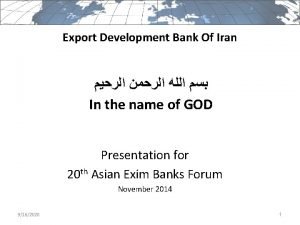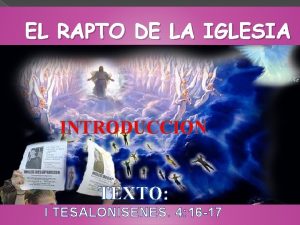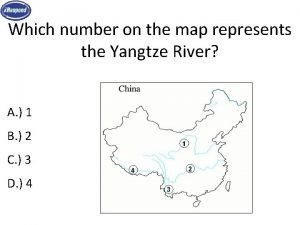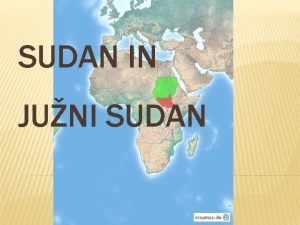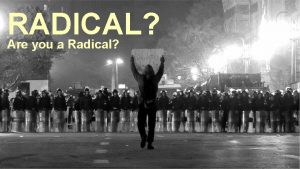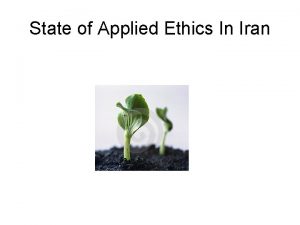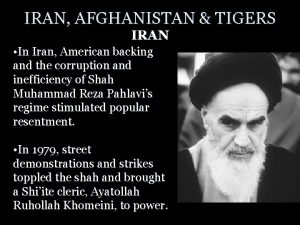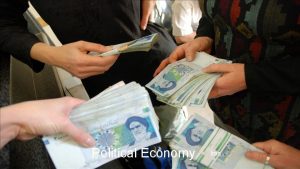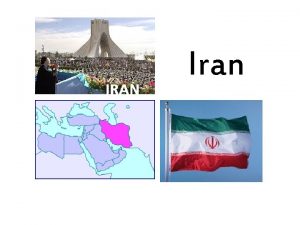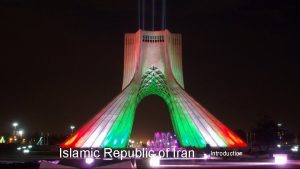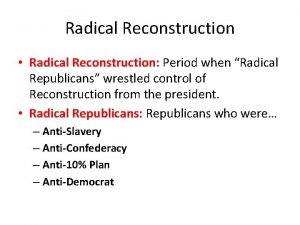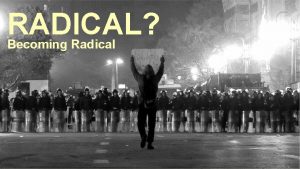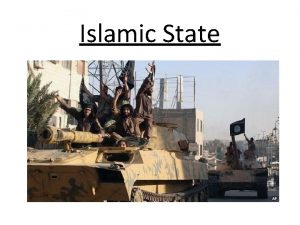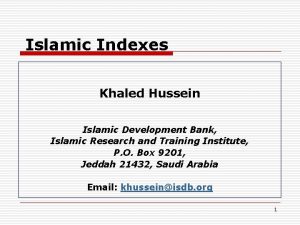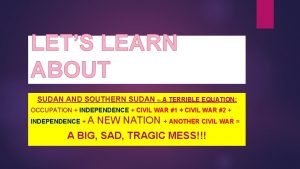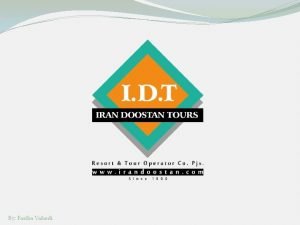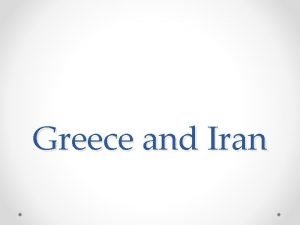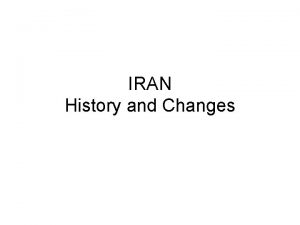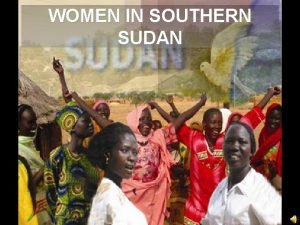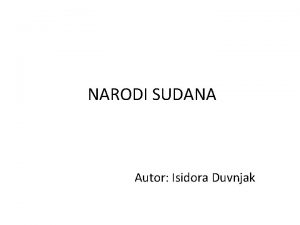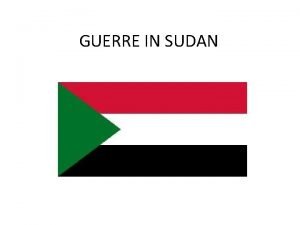Iran and Sudan as Radical Islamic States Prof










































- Slides: 42

Iran and Sudan as Radical Islamic States Prof. Dr. Bordás Mária National University of Public Service Faculty of Public Governance and International Studies 2019.

Islamist States and Organizations • Secret Organization (al-Qaida) - in fragile states, in desert, rocky areas, tribal areas, armed conflicts • Quasi state - in the territory of a state (Hezbollah, Hamas, Taliban, Boko Haram, Islamic State) • Recognized State (Iran and North Sudan) • Islamist organizations - supporting political parties (Egypt MB, ) • In the form of political parties (Erdogan PKK, Morsi Government MB, Tunisia Ennahda, Jordan MB, Morocco, Algeria FIS)

Iran

History of Iran (1) B. C. 2000: Persian Empire B. C. 6 th century: part of the Arab Caliphate: Abbajad dinasty – later independent

History of Iran (2) • Safavid dynasty (16 th century): independent Shia state • Able to keep its independence • 1906: constitutional revolution – first State Assembly took place – weak state • 1921: Reza Pahlavi came to power – 1925: he became shah • Constitutional monarchy – secular state • Western type reforms: not always with success, because they did not take into account the traditions and harmed the interest of religious elite (i. e. after state privatisation of their lands, badly organized agriculture – no farmers – unemployment) • Successes: social, welfare and education reforms

Reza Pahlavi • 1921: Reza Pahlavi came to power – 1925: he became shah • Constitutional monarchy – secular state • Atatürk is exemplar • German friendship: Russian, British occupation • 1941: new shah – Mohammed Reza Pahlavi

Modernization in Iran Reza Pahlavi: overthrew the Kadjar dinasty - 1925: proclaimed as shah - Constitutional monarchy: constitution and parliament - Base of the power: the strong army - Secularized state - Limited power of the religious leaders - Europen laws, educational system, dresses, customs - National identity

Reforms of Mohammed Reza Pahlavi Mosadek government: 1953. nationalized the foreign companies – British and American secret services removed them – shah could return, but had to withdrew the nationalization „White revolution”: regional power - Democracy paradox: not accepted by the people, because it was a reform from the top - Not always successful: against interest of people and the religious leaders - Contradictory: the shah’s luxury life and good relationship with the US

Mohammed Reza Pahlavi • White Revolution: a rapid industrial and military expansion as well as economic and social reforms • As a secular Muslim, Mohammad Reza gradually lost support from the Shiía clergy (land reform) • Conflict with the traditional class of merchants • The religious elite turns people against the shah • Shah had luxury lavish Western life stile • Corruption

1979. Islamic revolution

Characteristic of the Imamate in Iran • Autocracy: infallability of religious leaders, the secretary of the mysthic knowledge – excludes the control of the people • Sacred worship of shia Islam: mourning because of the death of Ali and his son Husajn, respected as holy persons • Leader: from the religious leaders only from Mohamed’s bloodline • Waiting for the 13 th Mahdi, the Savior (12 th disappeared) (Mahdi: imam who mediates spiritually between Allah and the religious leaders) Ali is the representative of the 12 th Mahdi • Imamzade: decorated sacred graves of imams, where worships are held, and places of community life

Iran as the Theocratic State • Emergence of theocratic state: - Imamate: supreme religious leaders, the nomination based upon the bloodline of Mohammed - Primacy of religious leadership: only with their agreement and support the state leader can be nominated - Parliamentarian democracy: just decoration, because it is working under very strict control of religious leadership (i. e. MPs, prime minister, ministers, regional and local administration) - Political Police and Iranian Revolutionary Guard : against movements of any opposition - Extreme terror: hard and drastic limitation of human rights, executions, tortures, imprisoning

Imamate Islamic revolution in 1979 – imamate with Western-type institutions • Constitution: the supreme power is Allah – Iran is an Islamic republic

Constitution of Iran Islamic revolution in 1979 – imamate: • Constitution: the supreme power is Allah – Iran is Islamic republic - Source of political power is Allah - Religious leaders: accepted by the poeple, absolute rights over the state system - Equality and participation of the people - Supreme Religious Leader: spiritual power, because represents the 12 th (last) imam - From Mohammed’s bloodline

2 supreme legal bodies - The supreme religious leader (ayatollah: Hamanei): political decision making, control over legislative body, executive body and jurisdiction, army and also the Iranian Revolutionary Guard, nomination of MP-s and state officials, his 2000 representatives in the public administration having authorisation to make any intervention to any issues - President of republic: elected, but the candidate should be approved by the religious leadership (Rohani)

Mahmúd Ahmedinezsád Former President of Republic (2005 -2013)



Legislation and Jurisdiction • Guardian Council: - 12 scientist of religious legacy, one half of them nominated by the supreme religious leader, second half by the judiciary, then approved by the parliament - Supervising the laws from the point of view of constitution and Islamic law (half of it sent back) • Parliament: MP candidate should be approved by the Guardian Council • Jurisdiction: revolutionary and religious courts

Security Services and Political Police • Organs of State Security: the goal is the protection of achievement of revolution – terrorizing the population Extreme dictatorship - sponsoring terrorism – the Western type state organisation is just decoration – the religious leadership is unquestionable

Complexity of the system

Iran during the Shah

Recent Iran

Recent Iran

Protests: in 2005 and 2012

Executions in Iran: more than in any other country in the world

Wears for women

Wears for women

Iran • Living standard is very low • Population does not support the dictatorship of the religious leaders – corruption os high • Number of suicides is high • 2 protests in 2005 and 2012, but was suppressed • Brutal political policy • Many refugees: can leave the country, but cannot return

History of Sudan - After getting independence (1956) from UK: weak state, military putsches and civil wars - 1989: Islamist dictatorship – harsh civil wars between South (blacks Catholics) and North (Arabs – Berber - Muslims) - South Sudan: independent state from 2011 (referendum) - North Sudan: Omar al-Basir’s military dictatorship – creation of fundamentalist Islamist Party (Muslim Brotherhood) – parliament, government, jurisdiction: only the member of the Islamist Party can be nominated – Sharia law - 1993: Place of safe haven for bin Laden (place of birth of al. Qaeda – tradition of radical Islam)


2 civil war between Noth and South • Genocide in Darfur • …. for OIL






Omar al-Basir



2. 7 million people displaced

Questions?
 Entire radical examples
Entire radical examples Unit 6 radical functions homework 6 radical equations
Unit 6 radical functions homework 6 radical equations What is an entire radical
What is an entire radical Sudan çıkma egzersizi
Sudan çıkma egzersizi Myeloperoxidase stain
Myeloperoxidase stain Bec curriculum in the philippines
Bec curriculum in the philippines What is the literacy rate in sudan
What is the literacy rate in sudan Karanlık gecede kara sudan zap suyuna giden yol
Karanlık gecede kara sudan zap suyuna giden yol Sudanese electricity transmission company
Sudanese electricity transmission company Periodic acid schiff stain principle
Periodic acid schiff stain principle Konflikt na bliskim wschodzie tomaszewska
Konflikt na bliskim wschodzie tomaszewska Ust sudan
Ust sudan Inso south sudan
Inso south sudan Organizacion celular
Organizacion celular Sudan black
Sudan black Ambulasyon egzersizleri
Ambulasyon egzersizleri Sudan iii indicator biomolecules
Sudan iii indicator biomolecules National audit chamber sudan
National audit chamber sudan Winwin south sudan
Winwin south sudan In sudan
In sudan Macromolecule indicator tests
Macromolecule indicator tests تعبير عن sudanese hospitality
تعبير عن sudanese hospitality Slave states free states
Slave states free states Southern states of america
Southern states of america Tyranny
Tyranny Satrapy of iran
Satrapy of iran Iran hostage crisis timeline
Iran hostage crisis timeline Kranj prebivalstvo
Kranj prebivalstvo Iran map cat
Iran map cat Persia before 1935
Persia before 1935 Iran'la sınırımızı belirleyen antlaşma
Iran'la sınırımızı belirleyen antlaşma William knox d'arcy
William knox d'arcy Jessica hana
Jessica hana Oliver north iran contra affair
Oliver north iran contra affair Language in iran
Language in iran Iran auto parts
Iran auto parts I must go home to iran again
I must go home to iran again Export development bank of iran
Export development bank of iran Rapto iglesia
Rapto iglesia Castigo eterno biblia
Castigo eterno biblia Which number on the map represents the country of iran
Which number on the map represents the country of iran Iba a ir
Iba a ir The voice iran
The voice iran
